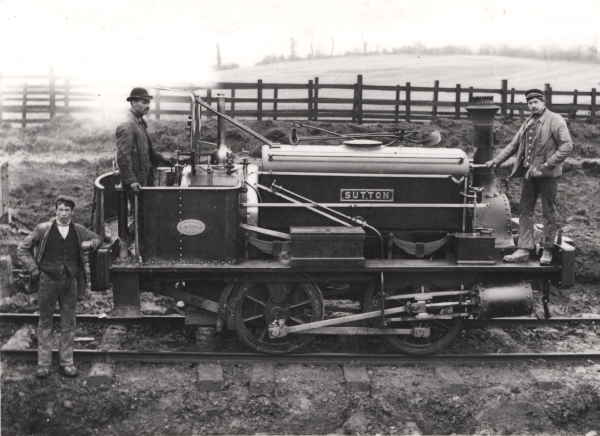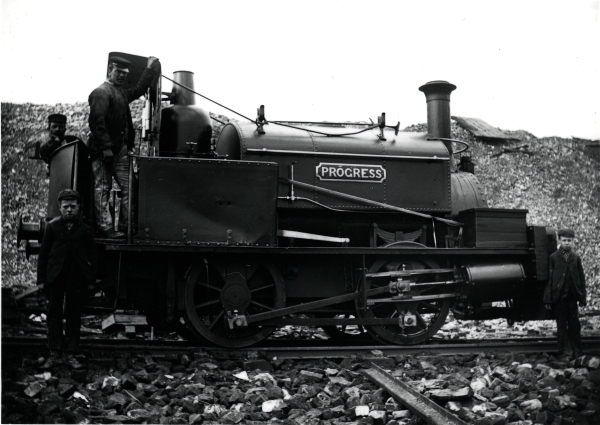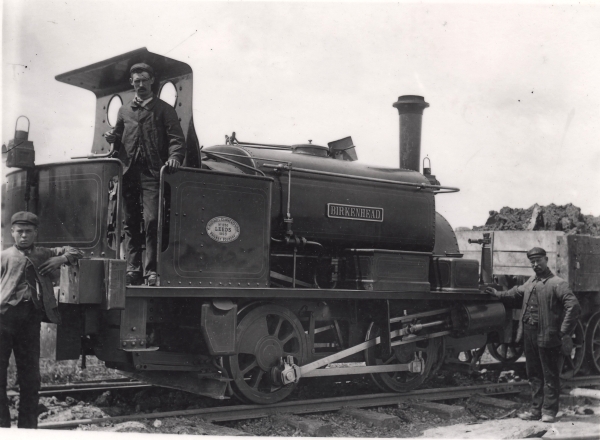Working alongside the six-coupled locomotives were the smaller four-wheeled saddletank types, again originating mainly from Manning Wardle and Hunslet's workshops. Although not as powerful as the larger locomotives, these small engines carried out a variety of tasks; being particularly well suited to work where the track was very light, or where the curvature was too great for the six wheeled locomotives.
One of the numerous four-coupled saddletank locomotives used by the contractors was SUTTON, a Manning Wardle 'C' class (No. 1016) of 1887. The engine is seen at Catesby in the employment of T. Oliver & Son, having previously worked on the Manchester Ship Canal construction. See Details
The designs of the four-coupled locomotives were very similar, regardless of which manufacturer had produced them. Each one weighted an average of 12 tons with a wheelbase of around 5 feet. The firebox grate area was typically in the region of 6 square feet, matched with a total heating surface of around 300 square feet. This, combined with a driving wheel diameter of just under 3 feet, produced a compact but powerful locomotive.
One of the Hunslet Engine Company's 0-4-0 saddletanks - PROGRESS, built in 1872 and given the works number 73. PROGRESS was photographed near the Regents Canal, Marylebone in March 1897. See Details
Like their larger cousins, the 0-4-0's had the same fixtures and fittings including the wheel washing apparatus, dumb buffers, and the same methods of lubrication. Water was stored in a saddletank and fed to the boiler via a pump, located beneath the boiler barrel and driven by an eccentric cam on the rear axle. This pump tended only to be used when the locomotives were in motion - a steam powered injector, forcing water into the boiler through the pressure of steam, was used at all other times.
The similarities between all of the 0-4-0 locomotives is evident in this photograph of BIRKENHEAD; taken at Haddenham on the Great Western & Great Central Joint Railway circa 1903. She was built by Hudswell Clarke & Co. (No. 650) that year and went new to Louis P. Nott who built this section of the railway. See Details










